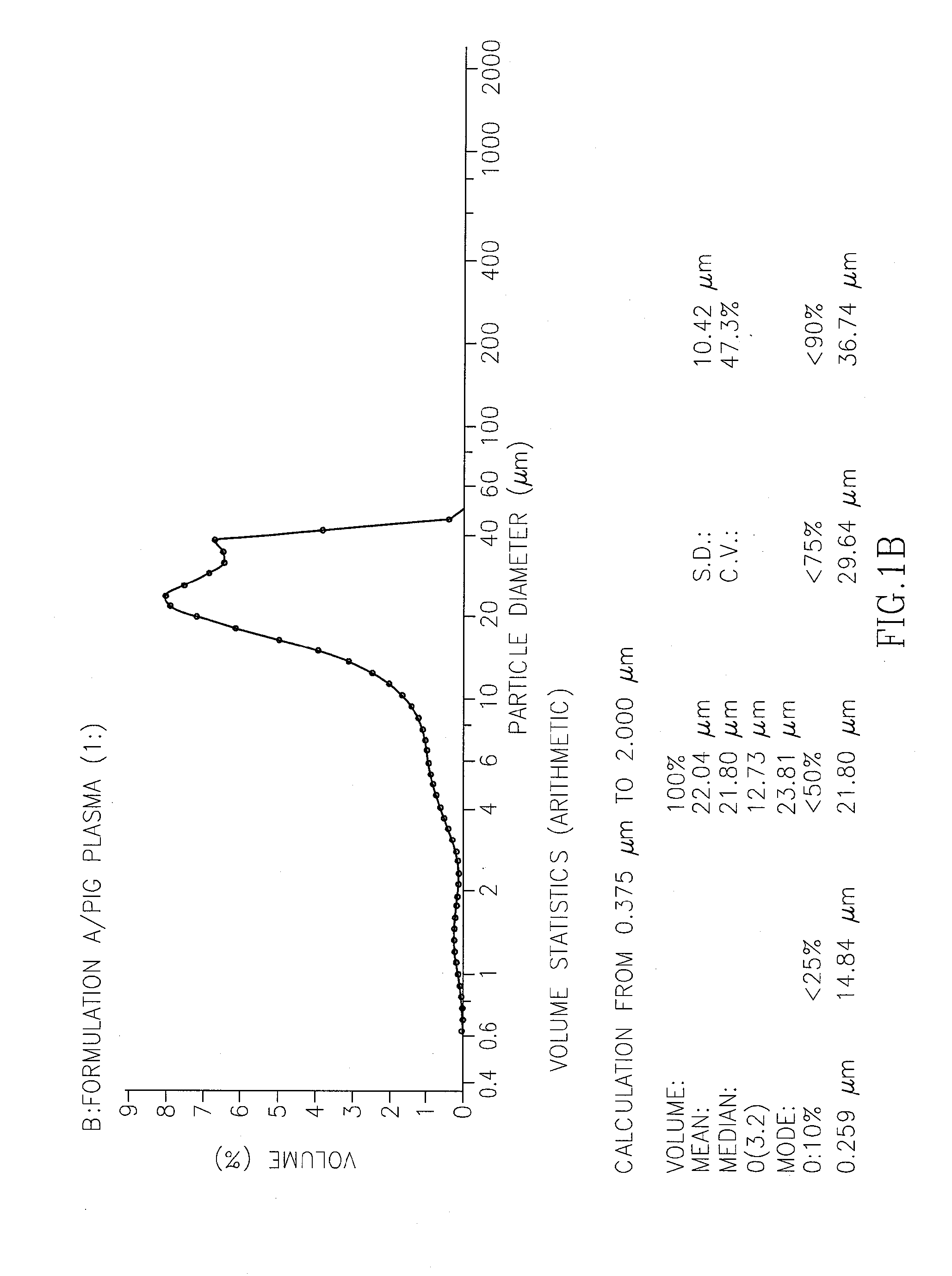Depot Formulations of a Local Anesthetic and Methods for Preparation Thereof
a local anesthetic and formulation technology, applied in the field of depot formulations, can solve the problems of patient substantial impairment in gastrointestinal, respiratory and cognitive functions, and concern about possible narcotic addiction
- Summary
- Abstract
- Description
- Claims
- Application Information
AI Technical Summary
Benefits of technology
Problems solved by technology
Method used
Image
Examples
example 1
Preparation of Pro-Liposomal-Non-Aqueous Oleaginous Ropivacaine Depot Formulation
[0209]A pro-liposomal, non-aqueous oleaginous formulation of ropivacaine was prepared as follows. The required amount of ropivacaine HCl monohydrate was placed into a pre weight (tarc) round bottom flask and the required amount of cysteine HCl is added. The required amount of lecithin (PL90G, phosphatidylcholine) was added into the flask followed by the required amount of castor oil (the order of ingredients is unimportant). Absolute ethanol, in an amount equal to or exceeding the required final amount, was added to the flask. The flask was closed tightly and weighed. The flask with ingredients was placed into a water bath sonicator and heated to about 50° C. When all ingredients were dissolved and absolute ethanol amount exceeded the required final amount, the flask was connected to a suitable evaporating apparatus (e.g., Rotavapor) and the water bath was maintained at a heat of about 50° C. Vacuum was...
example 2
[0211]Pro-Liposomal-Non-Aqueous Oleaginous Formulations of Ropivacaine
[0212]The non-aqueous non-liposomal oleaginous ropivacaine formulation was prepared in accordance with the process described in Example 1. Table 1A provides the components of the formulation (formulation A).
TABLE 1AFORMULATION A% [w / w]Ropivacaine HCl monohydrate 4.78%(equivalent to 4%ropivacaine base)Phospholipon (PL90G) (Lipoid (GMbH))53.91%(Pure phosphatidylcholine stabilized with 0.1% ascorbyl palmitate)Castor oil35.21%Cysteine HCl 0.1%Ethanol* 6.0%*Quantity reflects the final concentration in the formulation, but used in larger quantities during the production process
[0213]Table 1B provides the components of inferior formulations comprising synthetic phospholipids used for comparison with Formulation A.
TABLE 1BCOMPONENTSFormulation 3Formulation 4Ropivacaine HCl monohydrate 4.78% 4.78% (equivalent to 4% (equivalent to 4% ropivacaine base)ropivacaine base)DMPG (1,2,Dimyristoyl-sn- 5.02% 5.02%glycero-3-phosphogl...
example 3
Viscosity Measurements of the Depot Formulations
[0215]The viscosity of depot formulation A as well as formulation 3 and 4 was measured by the spindle method using viscometer (Brookfield model DV-II) equipped with spindle 5; bath temperature of 30° C., speed of 30, 60 and 100 RPM.
[0216]Formulation A has a lower viscosity (1720 cP) than formulations 3 and 4 which contain DMPG (3031 cP). This difference is made explicit by the increased flow characteristics of depot formulation A as well as an eased overall handling (syringability and injectability) which makes the formulation A more suitable for parenteral administration. Formulations devoid of ethanol had higher viscosity and are unsuitable for parental administration.
PUM
| Property | Measurement | Unit |
|---|---|---|
| size | aaaaa | aaaaa |
| viscosity | aaaaa | aaaaa |
| size | aaaaa | aaaaa |
Abstract
Description
Claims
Application Information
 Login to View More
Login to View More - R&D
- Intellectual Property
- Life Sciences
- Materials
- Tech Scout
- Unparalleled Data Quality
- Higher Quality Content
- 60% Fewer Hallucinations
Browse by: Latest US Patents, China's latest patents, Technical Efficacy Thesaurus, Application Domain, Technology Topic, Popular Technical Reports.
© 2025 PatSnap. All rights reserved.Legal|Privacy policy|Modern Slavery Act Transparency Statement|Sitemap|About US| Contact US: help@patsnap.com



